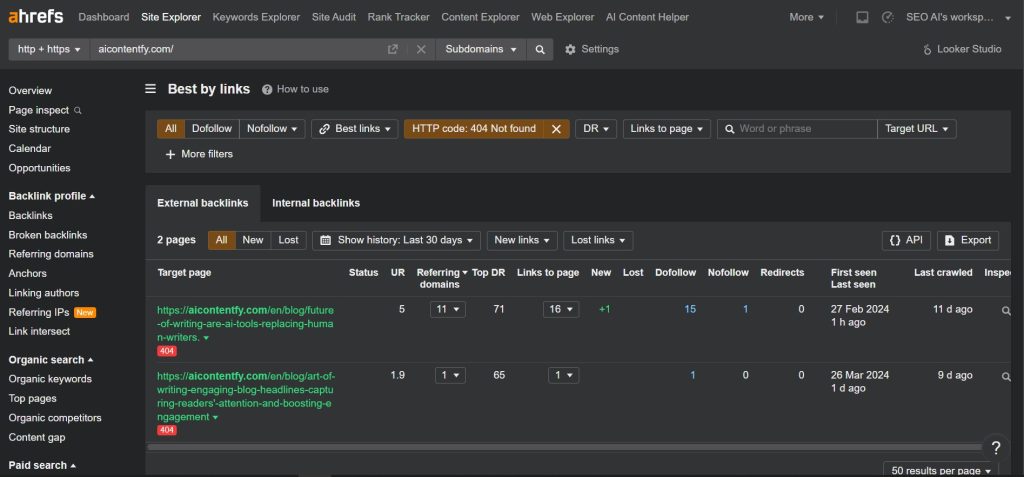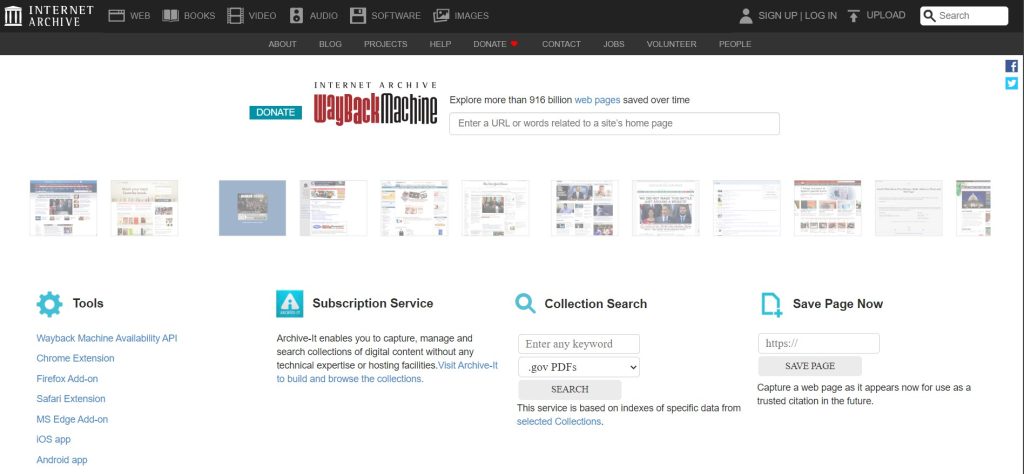Ever stumbled upon a dead link while browsing your favourite website? Annoying, right? But what if I told you that these broken links could be your golden ticket to boosting your website’s SEO? Intrigued? Let’s dive deep into the world of broken link building and uncover how you can turn these digital dead ends into high-quality backlinks.
What is Broken Link Building?
Broken link building is a sophisticated SEO technique that involves identifying broken pages on the web and reaching out to the sites linking to them.
The primary objective is to persuade these sites to replace the dead link with a link to a relevant page on your site. This strategy is mutually beneficial: the site owner fixes their broken link, enhancing user experience and SEO, while you gain a valuable backlink, boosting your site’s authority and search engine rankings.
Does Broken Link Building Still Work?
The effectiveness of broken link building is a topic of debate within the SEO community. Some experts argue that it’s an outdated tactic, while others vouch for its continued success. The reality is nuanced. Like any SEO strategy, its success hinges on meticulous execution. Understanding the intricacies, such as the quality of the broken links, the relevance of your replacement content, and the precision of your outreach, can lead to significant SEO gains.
When done correctly, broken link building can be a highly effective method for acquiring authoritative backlinks.
How to Do Broken Link Building
Ready to get started? Here’s an in-depth, step-by-step guide to mastering broken link building:
1. Find Broken Pages with Backlinks
The first step is to identify broken pages that have backlinks. This is where advanced SEO tools like Ahrefs come into play. Ahrefs’ Site Explorer allows you to uncover broken pages on your competitors’ websites, while their Content Explorer can help you find broken pages on specific topics. Here’s how to leverage these tools effectively:
- Competitors’ Broken Pages: Use the “Best by links” report in Ahrefs and filter for “404 not found” pages. This report shows you the pages with the most backlinks that are currently returning a 404 error, indicating a broken page.

- Topic-Specific Broken Pages: Use Content Explorer to search for broken pages with backlinks on a particular topic. This can help you find niche-specific opportunities that are highly relevant to your content.
- Broken Links on Competing Websites: Check the “Broken Links” report to see which broken pages your competitors are linking to. This can reveal opportunities to replace those links with your own content.
- Resource Pages: Use Google search operators (e.g., “keyword + inurl:resources”) to find resource pages in your industry. These pages often contain numerous outbound links, some of which may be broken. Identifying and replacing these links can be a goldmine for backlinks.
2. Vet the Link Prospects
Not all broken link opportunities are created equal. It’s crucial to vet the link prospects to ensure they have high-quality backlinks and to understand why people linked to the dead page in the first place. This vetting process involves:
- Check Link Quality: Use filters in Ahrefs’ Backlinks report to assess the quality of the backlinks. Look for links from authoritative domains with high domain ratings (DR) and relevant content. Avoid links from spammy or low-quality sites.
- Understand Link Reasons: Identify why people linked to the dead page by examining the anchor text and the surrounding context. This insight helps you create a replacement page that meets or exceeds the original content’s value, making it easier to convince site owners to link to your page.
3. Create a Replacement Page
Creating a replacement page is a critical step. Your new content must match or surpass the quality of the original page. Here’s how to do it:
- Use the Wayback Machine: The Wayback Machine allows you to see what the dead page looked like before it went offline. Use this as a reference to create a similar outline and structure for your replacement page.
Visit the Wayback Machine and find dead pages >>

- Add Linkable Points: Based on your vetting process, identify key points that made the original page valuable. Incorporate these points into your content and enhance them with additional value, such as updated statistics, visuals, templates, or in-depth analysis.
- Ensure High Quality: Your replacement page should be comprehensive, well-researched, and visually appealing. Use high-quality images, infographics, and videos to make the content more engaging and shareable.
4. Do Outreach
Outreach is the final and most crucial step. This is where you pitch your replacement resource to those linking to the dead page. A hybrid approach, combining shotgun and sniper outreach, can be highly effective:
- Segment Your Prospects: Divide your prospects into different segments based on their linking behavior and the context of their links. This allows you to tailor your outreach messages more effectively.
- Create Personalized Templates: Develop personalized outreach templates for each segment. For deep linkers, address their specific reasons for linking to the dead page and highlight how your replacement page meets those needs. For general linkers, use a broader pitch that emphasizes the overall improvements and value of your content.
- Highlight Unique Value: In your outreach messages, clearly articulate the unique value of your replacement page. Explain how it enhances user experience, provides updated information, and offers additional resources that the original page lacked.
- Follow Up: Persistence is key in outreach. If you don’t receive a response initially, follow up with a polite reminder. Sometimes, it takes multiple touchpoints to get a positive response.
Here is a unique outreach template you can use
Subject: Quick Fix for Your Broken Link on [Website Name]
Hi [Recipient's Name],
I hope this message finds you well. While browsing through [Website Name], I noticed that one of your pages contains a broken link to [Dead Page URL]. As a fellow content creator, I understand how frustrating it can be to have broken links affecting user experience and SEO.
To help you out, I’ve created a comprehensive and updated resource that covers the same topic as the original page. You can check it out here: [Your Replacement Page URL].
This new page includes [mention key points or unique value, e.g., updated statistics, high-quality visuals, in-depth analysis], which I believe will provide even more value to your readers.
If you find it useful, I’d be thrilled if you could replace the broken link with this new resource. It’s a win-win: your readers get access to updated information, and I get to share my content with a wider audience.
Thank you for considering my request. If you have any questions or need further information, please don’t hesitate to reach out.
Best regards,
[Your Name]
[Your Position]
[Your Contact Information]Conclusion
Broken link building is a powerful SEO strategy when executed with precision. By identifying broken pages with backlinks, vetting the link prospects, creating a compelling replacement page, and conducting targeted outreach, you can transform digital dead ends into valuable backlinks. Ready to give it a go? Start by exploring your competitors’ broken pages and see where this strategic approach takes you. With dedication and attention to detail, you can significantly enhance your website’s authority and search engine rankings.






